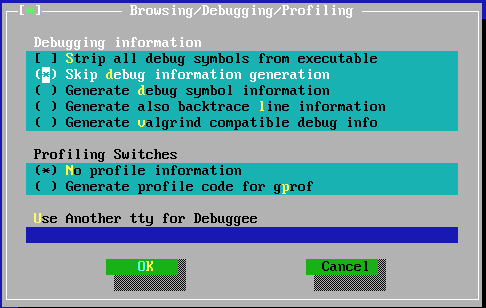
In the debug options dialog (reachable via ”Options—Debugger”), some options for inclusion of debug information in the binary can be set; it is also possible to add additional compiler options in this dialog. The debug options dialog is shown in figure (6.31).
The following options can be set:
tells the compiler which debug information should be compiled in. One of the following options can be chosen:
Will strip all debug and symbol information from the binary. (option -Xs on the command line).
Do not generate debug information at all.
Include debug information in the binary (option -g on the command line). Please note that no debug information for units in the Run-Time Library will be included, unless a version of the RTL compiled with debug information is available. Only units specific to the current project will have debug information included.
Will compile with debug information, and will additionally include the lineinfo unit in the binary, so that in case of an error the backtrace will contain the file names and line numbers of procedures in the call-stack. (Option -gl on the command line.)
Generate debug information that can be read with valgrind (a memory checking tool).
Tells the compiler whether or not profile code should be included in the binary.
Has no effect, as it is the default.
If checked, profiling code is included in the binary (option -p on the command line).
An attempt will be made to redirect the output of the program being debugged to another window (terminal), whose file name should be entered here.